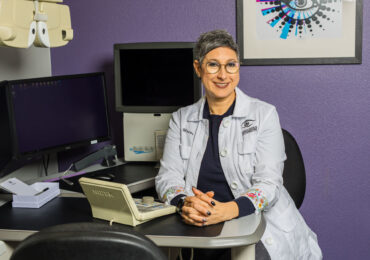Motion sickness is a common condition that can cause nausea, dizziness, and vomiting. It is often caused during travel by car, boat, or plane and can also result from certain visual stimuli. Traditional methods for managing motion sickness include medications, such as antihistamines or scopolamine patches, and behavioral strategies, like focusing on the horizon or avoiding reading while in motion. However, vision therapy is a promising solution that offers a non-pharmacological approach to alleviate motion sickness symptoms by addressing its underlying visual causes.
What is Vision Therapy?
Vision therapy is a form of neurological and visual rehabilitation that involves a series of personalized exercises designed to improve the coordination and functionality of the eyes and brain. It aims to enhance visual skills such as eye tracking, focusing, and binocular vision, which are crucial for processing visual information accurately and efficiently. Vision therapy is tailored to the individual’s needs, making it a versatile treatment option for various visual and neurological conditions.
Causes of Motion Sickness
The primary reason behind motion sickness is widely accepted to be the sensory mismatch theory. It occurs when there is a disconnect between the visual information the eyes perceive and the vestibular system’s sense of movement, leading to confusion in the brain. The visual system plays a critical role in maintaining balance and spatial orientation, and when it sends conflicting signals compared to the vestibular input, motion sickness symptoms can arise. Vision therapy addresses this issue by improving visual and vestibular information integration and processing.
How Vision Therapy Helps with Motion Sickness
Vision therapy can significantly alleviate motion sickness by targeting the visual dysfunctions contributing to the sensory mismatch. Vision therapy exercises are designed to enhance eye coordination, tracking, and focusing abilities, thereby reducing the discrepancy between visual and vestibular inputs. Success stories and case studies have demonstrated the effectiveness of vision therapy in reducing or even eliminating motion sickness symptoms, allowing individuals to engage in activities that were previously challenging or uncomfortable due to motion sickness.
Conclusion
Vision therapy presents a promising avenue for individuals grappling with motion sickness. It offers a non-pharmacological approach that targets the visual underpinnings of this condition. By enhancing visual coordination, tracking, and focusing abilities, vision therapy can significantly mitigate the symptoms of motion sickness, providing a new lease on life for those affected. The individualized nature of vision therapy ensures that each program is customized to meet the patient’s unique needs, providing a more effective and targeted treatment.
For those suffering from motion sickness symptoms, relief begins with a comprehensive vision evaluation. At Rancho Santa Fe Optometry, we provide personalized care and innovative solutions to help you overcome motion sickness. Our team is here to guide you through a vision therapy program designed to address your specific needs and challenges.
Don’t let motion sickness hold you back any longer. Take the first step towards a more comfortable and enjoyable life by scheduling a comprehensive eye exam with us today. Explore the solutions to your motion sickness and discover how vision therapy can make a difference in your life. Call us at (858) 201-7956 or request an online appointment. Let us help you navigate the path to improved visual health and well-being.
At Rancho Santa Fe Optometry we offer comprehensive eye examinations for all ages. With a focus on children’s vision and vision therapy, our doctors test for visual acuity, visual efficiency skills and visual information processing starting in early infancy. The practice also provides diagnosis, treatment and management of diseases that affect the human eye and visual system, including dry eye syndrome, diabetic retinopathy, cataracts, macular degeneration and keratoconus.


